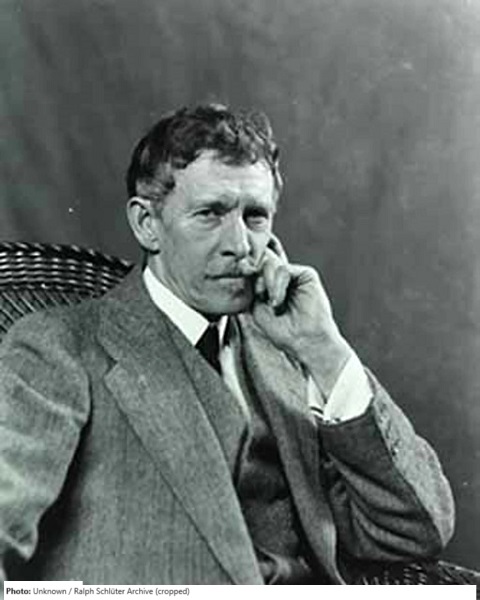Frederick MacMonnies got his first lessons in painting from his mother, a descendant of the famous painter Benjamin West. Frederick was an apprentice to the famous sculptor Augustus Saint-Gaudens and initially studied in New York at the National Academy of Design and Art. He later turned to sculpture, while in Paris studying at the École nationale supérieure des beaux-arts de Paris and at the Art Academy in München. Until the outbreak of World War I, MacMonnies lived mostly in France, where he received several awards, later returning to New York.
As one of the most prominent representatives of the American Beaux Arts movement MacMonnies created numerous monuments, reminiscent of events in American history. He designed the largest stone monument of the time, erected in Meaux (France). His second wife was his former student, Alice Jones (1875-1963), sister of tennis players Marion and Georgina Jones, who had participated in the 1900 Olympic Games. MacMonnies died of pneumonia after having run into financial difficulties in the 1929 stock market crash.
In 1924 he was a member of the jury of the art competitions. Although MacMonnies was best known for his monumental works, he also created small sculptures and medals. In 1932 he won the silver medal with his Lindbergh Medal in the Category Medals and Reliefs within the sculpturing competition at the Los Angeles Games. The medal was commissioned by the Society of Medalists in 1931 without specifying a specific topic. The artist chose Charles Lindbergh’s transatlantic flight in May 1927. The front shows a portrait of the aviator, the back shows a lone eagle (inscription “Lone Eagle”) fighting storms and lightning and the defated figure of death. The gold-plated bronze medal has a diameter of 7.3 cm. There was, however, a version with a diameter of only 3.2 mm.

 United States
United States USA
USA USA
USA